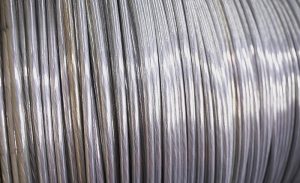Copper core and aluminum core wires are commonly used in daily life, each with distinct characteristics. The most noticeable difference lies in their appearance: copper core wires have a distinctive purple-red hue, making them easily identifiable, while aluminum core wires are grayish-white. In terms of texture, copper wires are harder and more resilient—they retain their shape when bent and can withstand repeated flexing without breaking. In contrast, aluminum wires are softer and more pliable but prone to snapping after multiple bends, much like fragile branches.
However, appearance alone isn’t enough to determine the best choice. Key performance differences—such as conductivity, mechanical strength, stability, and corrosion resistance—play a crucial role in decision-making.
1. Conductivity
Copper core wires outperform aluminum wires in conductivity. From a physical perspective, lower resistance means better electrical transmission.
2. Mechanical Strength
Copper wires also excel in durability and tensile strength, making them less likely to break under stress. Aluminum wires, while lightweight, are more susceptible to damage when bent repeatedly, limiting their applications.
3. Cost Considerations
Aluminum core wires are significantly more affordable, making them an attractive option for budget-conscious consumers.
Choosing the Right Wire for Your Needs

The decision between copper and aluminum wires depends on specific usage scenarios:
Home Wiring: Copper core wires are the best choice due to their long-term safety, stability, and durability. Since household electricity demands reliability, investing in copper wires ensures peace of mind.
Temporary Installations: For short-term use or projects with lower performance requirements, aluminum wires are cost-effective and practical.
High-Voltage Power Transmission: Aluminum wires dominate this field because of their lightweight nature, which reduces strain on transmission towers and lowers construction costs—making them ideal for long-distance power lines.
Conclusion
Both copper and aluminum core wires have their advantages and limitations. When selecting, consider factors such as electrical needs, budget, and environmental conditions. For home use, prioritize copper wires for safety and longevity. For temporary setups, aluminum wires offer an economical solution. In high-voltage transmission, aluminum’s lightweight properties make it the industry standard.